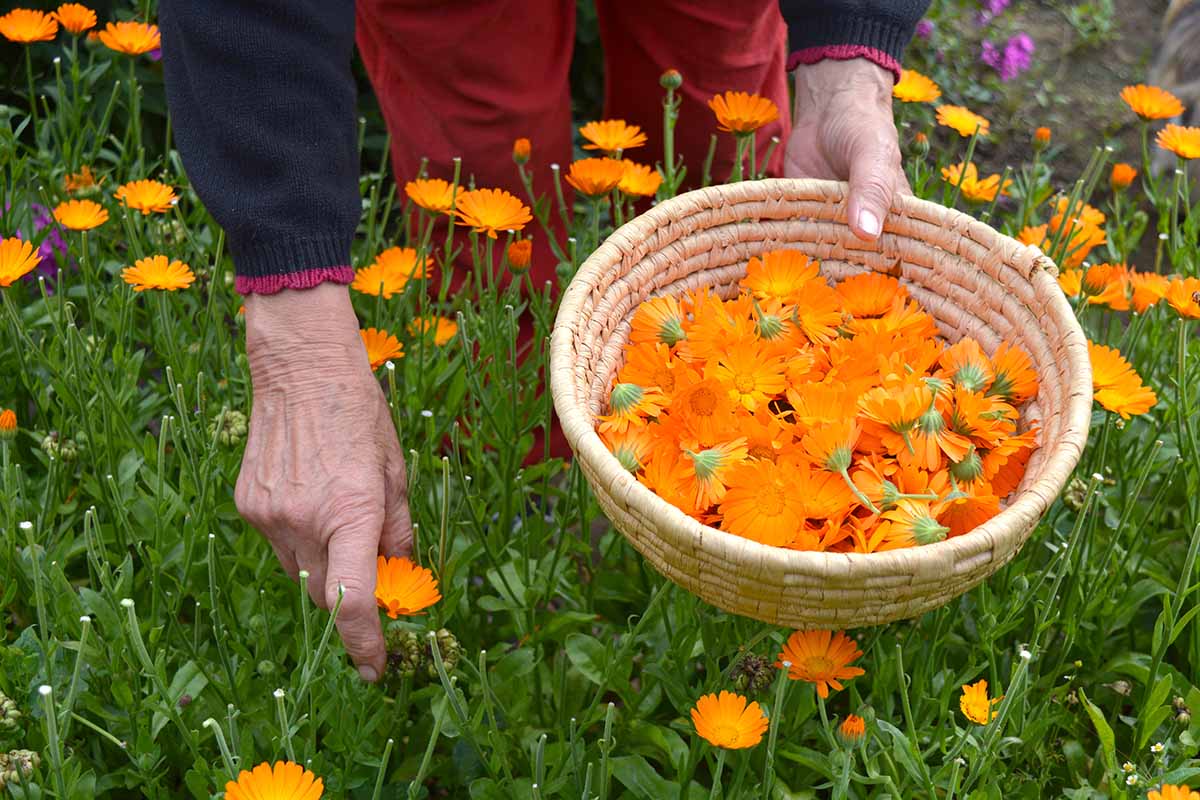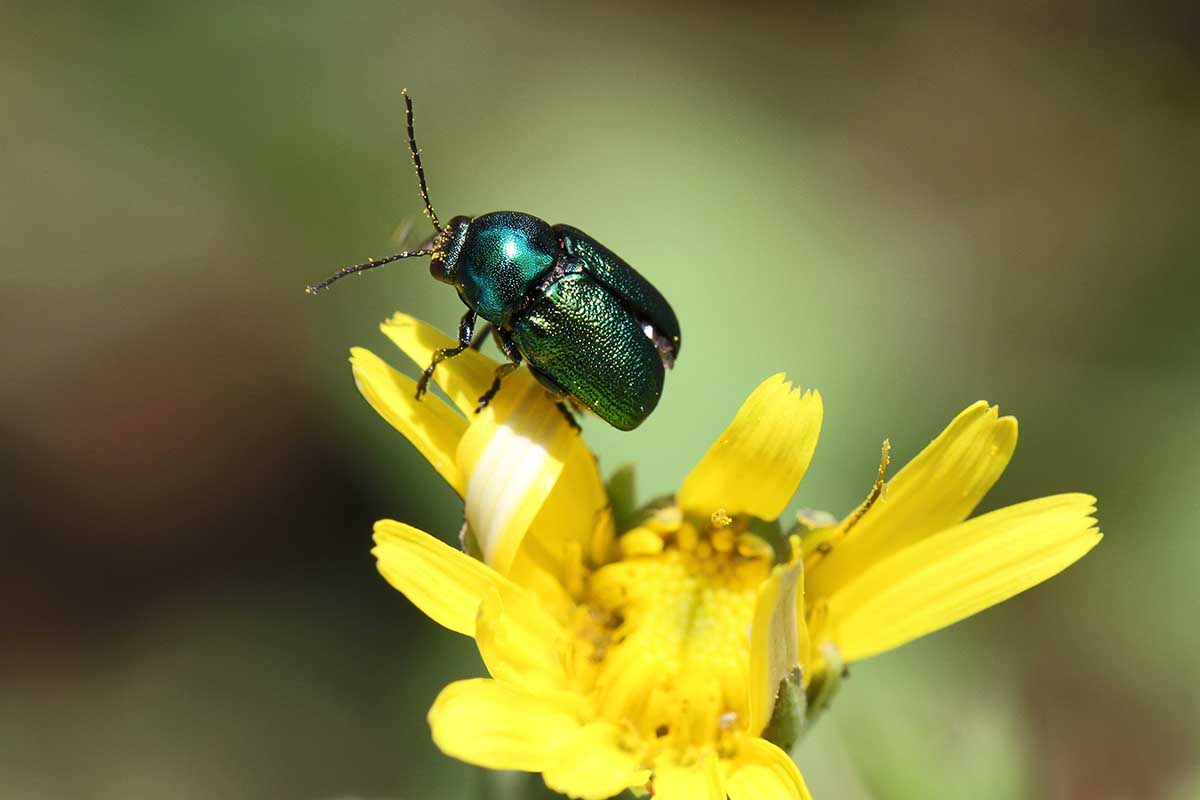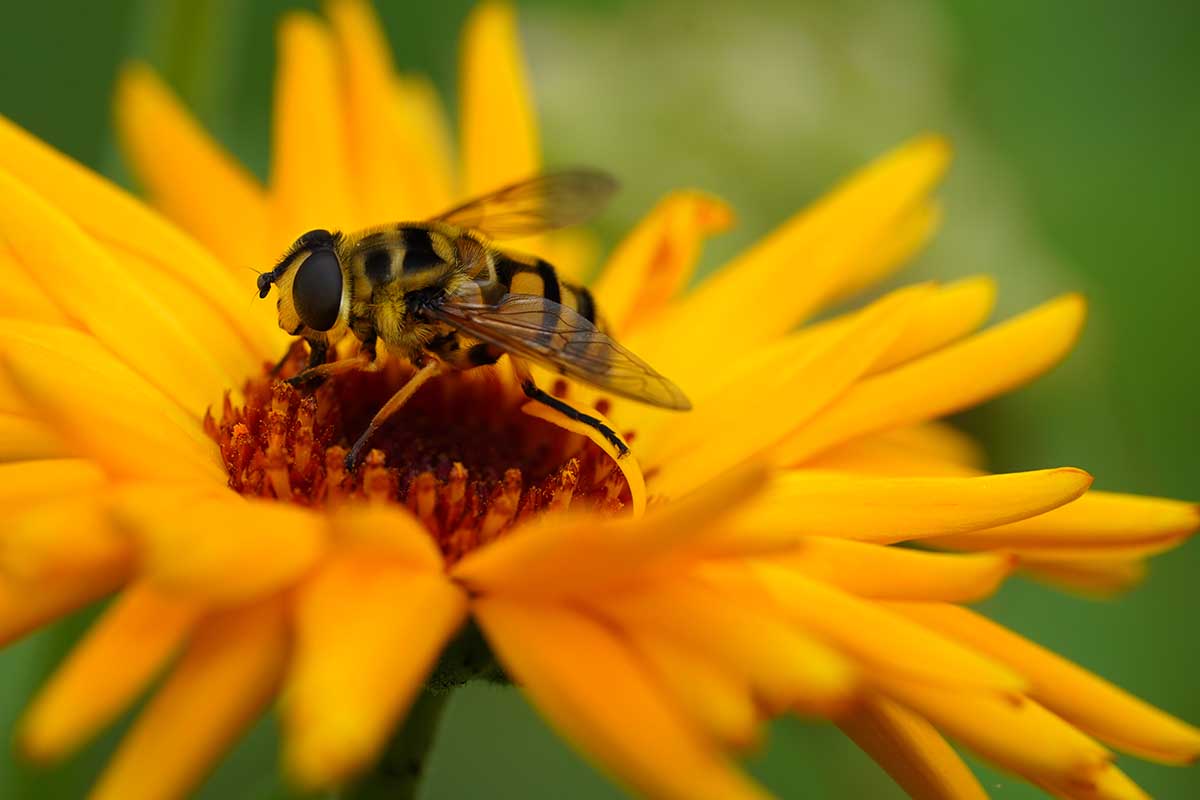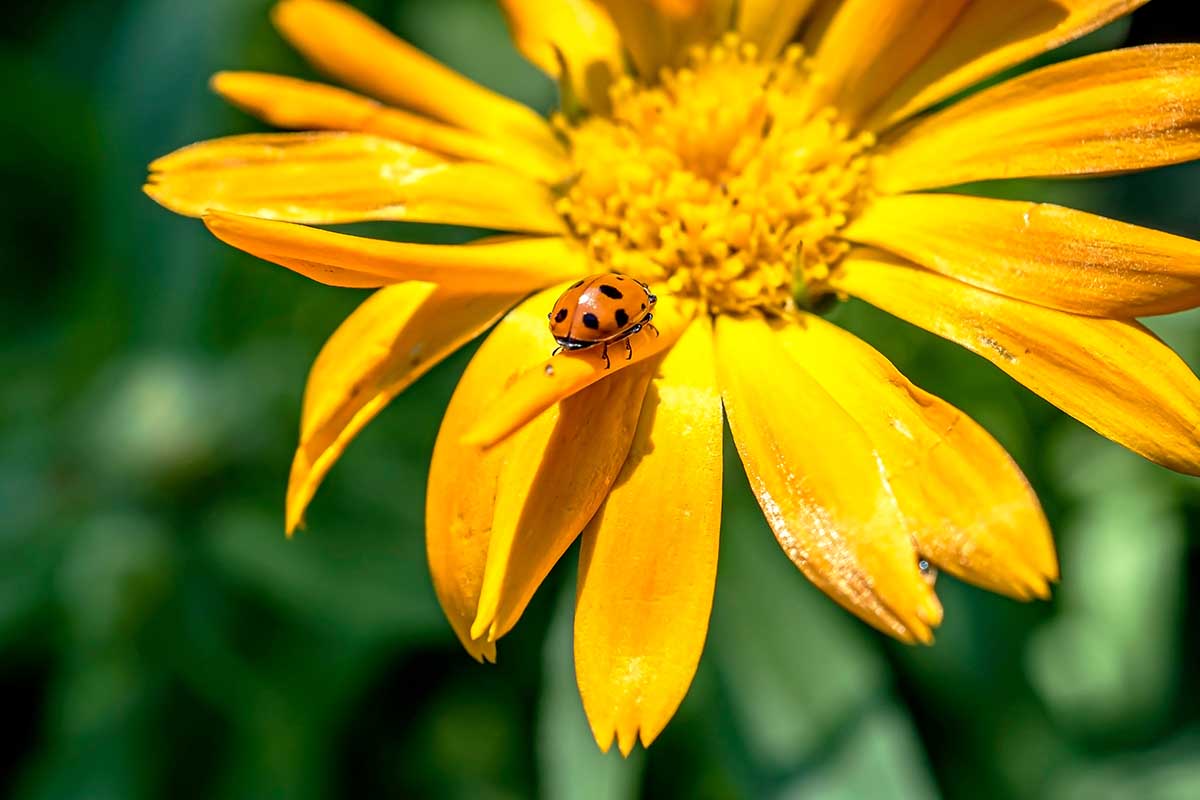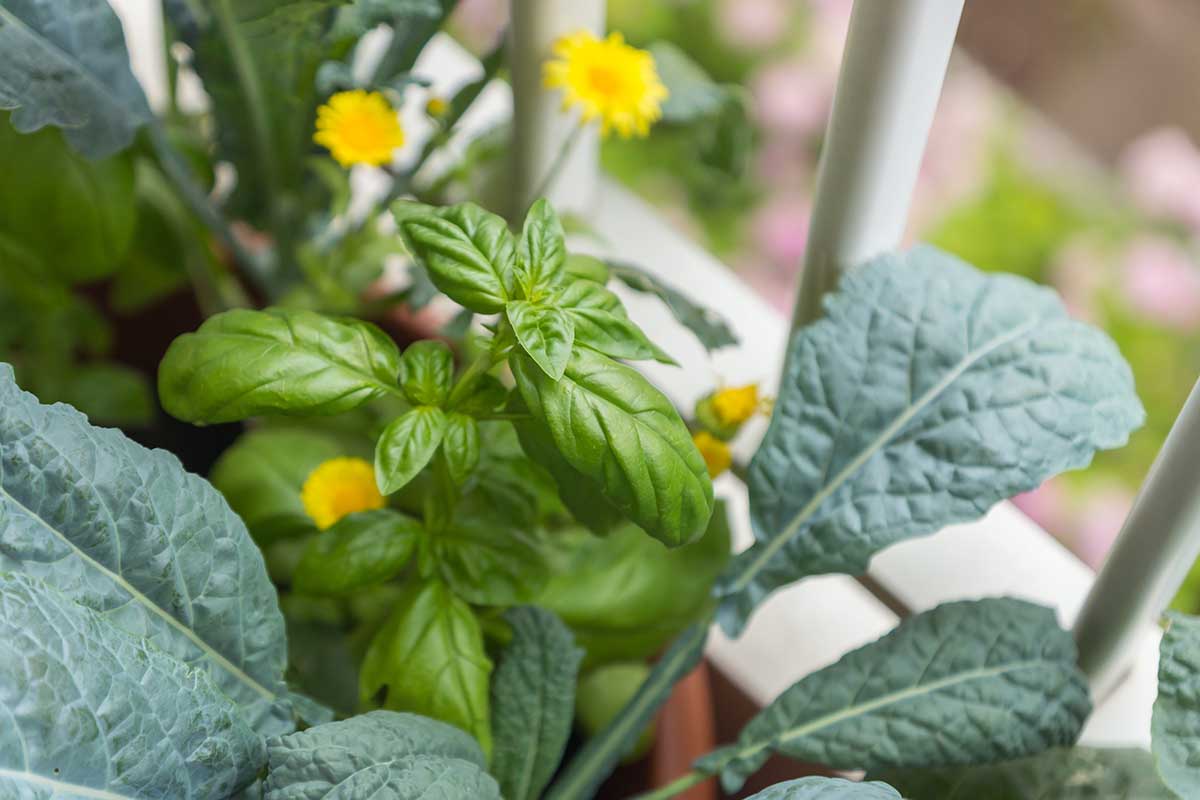Pretty, medicinal, tasty as tea, and easy to grow, you may have grabbed a packet of seeds during your spring fever with plans to liberally sprinkle these plants throughout your garden this year. We link to vendors to help you find relevant products. If you buy from one of our links, we may earn a commission. Some say it attracts pests, including aphids. Shudder. Others say it’s a good companion plant for certain vegetables. So, which is it? This depends on how you look at it, plan to use it, and which insects Mother Nature deals you this year, as you’ll find out below. Let’s talk about it. Here’s what we’ll cover in this guide:
What Is Calendula?
Sporting beautiful bright blooms in sunny shades of orange, yellows, creams, and hues in between, these flowers are a popular addition to flower, herb, and vegetable gardens. Also known commonly as pot marigolds, their botanical name is Calendula officinalis. If the name sounds familiar but you’re not sure that it’s because you’ve seen seed packets in the gardening aisle, you may have skimmed over products containing extracts in the pharmacy aisle. Calendula is a long-used, popular natural and traditional medicine used for a variety of things including wound healing. It has anti-inflammatory, anti-fungal, antibacterial, and anti-cancerous properties, among others. Pot marigold extracts are also useful as insecticides. Dried flowers are sometimes used as an insect repellent, which makes sense, as the flower extracts have been found to show insecticidal activity.
Bugs Attracted to Calendula
This flower has its fair share of interested insects, but not all of them are bad bugs. Pests that you may see making a meal of it include blister beetles, tarnished plant bugs, spider mites, thistle butterfly caterpillars, slugs, flea beetles, cucumber beetles, and, most commonly, whiteflies and aphids. So, the answer to the question of whether it attracts pests or not is yes. But if pot marigold attracts these unwanted beasties, why is it often listed as a companion plant, trap crop, or even a beneficial plant? That’s because hoverflies, predatory Miridae, ladybugs, lacewings, minute pirate bugs, and a variety of other beneficial insects also love this cheerful bloom. Let’s take a look at the role this can play in your garden when you choose to plant calendula.
Calendula in the Garden
C. officinalis is full of goodies for the highly desired insects mentioned above. In general, it tends to benefit populations of natural pest predators, attracting them to the garden and encouraging them to settle, reproduce, and contribute to pest control and pollination. The flowers produce a lot of pollen and nectar. Orius sauteri, for one, a type of pirate bug, appreciates these delectable and nutritious floral resources, and in turn helps to suppress aphids and thrips. Hoverflies and other useful Hemipteran insects also enjoy a calendula-flavored meal of pollen or nectar. The plant also provides shelter, such as overwintering sites loved by Dicyphus, a generalist predator bug that you really can’t get enough of in your garden. Hence, it can be a very useful garden addition, and not only for its beneficial insect appeal. Studies have shown that intercropping calendula with carrots reduced carrot pest damage, including that caused by nematodes. Plus, it reduced diamondback moth incidence when intercropped with white cabbage in another study. All this to say it makes an excellent companion plant. Calendula can help to prevent beetles from attacking asparagus and repel tomato hornworms from tomatoes, plus it will entice aphids away from making a meal out of your beans. Herein lies the key to this plant being a good choice as a trap crop. Since it is so eye-catching to the average insect, when paired with certain crops, it can serve as the more alluring option. And if the pest insect is busy on your pot marigolds, it won’t be bothering your crops. The trick for trap crops to work is treating or sacrificing the plants once they’re infested, so they don’t become a haven for pests to then disperse to your crops. Of course, considering calendula is like a bed and breakfast for good bugs too, if you do decide to treat your plants with insecticides, use something safe for beneficial insects. In order to know when your calendula needs treating or sacrificing, however, you must keep a good eye on it. But that’s not a chore, since they’re a treat for the eyes! You can read more about implementing a trap-cropping strategy in your garden here. Attractive to both pests and beneficials, it’s a matter of weighing which category has the upper hand in your garden, and using the flowers to your advantage. I’m planting calendula in my vegetable garden this year – once it stops surprise snowing, that is! Zone 3 problems… Are you sowing these flowers this season? Keep me updated on which insects you see visiting, and whether they’re good or bad bugs, in the comments below. And for more information about other functional flowers, check out these guides next:
How to Plant and Grow NasturtiumsHow to Use Marigolds for Pest ControlHow to Grow Bee Balm: Bring Out the Hummingbirds!


